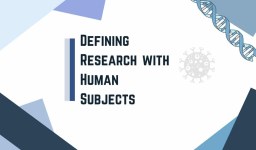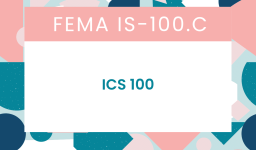- 9th Grade
- Lexile: 870
Source: The Man in the Well by Ira Sher
Assessment Answers
| Question | Answer |
|---|---|
| Which of the following best describes a main theme of the text? | People can act in cruel ways when they hold power over others. |
| How does the narrator’s point of view influence how the events are described in the passage? | The narrator feels shame about what happened but still tries to tell the story in a truthful way. |
| PART A: How do the children respond to the man’s initial cry for help? | They make their decision without talking, but why they choose not to help the man is left unclear. |
| PART B: Which of the following quotes best supports the answer to Part A? | “Everyone, like myself, was probably on the verge of fetching a rope, or asking where we could find a ladder, but then we looked around at each other and it was decided.” (Paragraph 2) |
| Which statement best describes the relationship between the children and the man in the well at the end of the story? | The children were embarrassed that they had treated the man poorly. |
How do the children’s interactions with the man in the well reveal the theme of the text? Use at least two pieces of evidence in your response.
The children’s interactions with the man in the well in Ira Sher’s “The Man in the Well” intricately reveal the text’s theme, which revolves around the complexities of moral responsibility, the impact of group dynamics on individual actions, and the ease with which humans can dehumanize others when they are removed from direct accountability.
These themes are explored through the children’s decision-making processes, their evolving relationship with the man, and their ultimate failure to act on their moral instincts.
Firstly, the children’s initial response to the man’s plea for help demonstrates a significant aspect of the theme: the conflict between individual moral instincts and group consensus. The narrator mentions, “Everyone, like myself, was probably on the verge of fetching a rope, or asking where we could find a ladder, but then we looked around at each other and it was decided” (Paragraph 2).
This moment highlights how peer influence and the lack of a clear leader can lead to collective inaction. Despite initially wanting to help, the children look to each other for guidance, and in their silent consensus, choose inaction.
This illustrates how individual responsibility can be diluted within a group, leading to morally questionable decisions.
Secondly, the manner in which the children engage in deception further underscores the theme. As the narrative progresses, the children start to lie to the man about seeking help, with statements like, “Yes, they’re all gone now. Isn’t there any water down there?” (Paragraph 15) and reassurances about help arriving soon, which were never true.
These interactions reveal how the children, caught in their own web of lies and deceit, become increasingly desensitized to the man’s plight. It reflects on the human capacity to detach from empathy and moral obligations when not faced with immediate consequences or when those suffering are kept at a distance—both physically, in this case, by the well, and emotionally, through their choice to remain anonymous and detached.
These two pieces of evidence collectively reveal a theme centered on the loss of moral direction in the face of peer influence and anonymity.
The children’s actions—or lack thereof—serve as a commentary on how easily ethical considerations can be overridden by the desire to conform to group norms or avoid direct involvement.
Furthermore, the story critiques the ease with which individuals can ignore the suffering of others, especially when not confronted with it directly, and how anonymity can foster a sense of impunity in neglecting one’s moral duties.
Through the children’s interactions with the man in the well, Sher exposes the darker facets of human nature and the complex interplay between individual conscience and collective behavior.
Discussion Answers
Are the children’s actions in this story cruel? Based on your own experiences, do you believe children can often be cruel to others? Explain your answer.
The actions of the children in “The Man in the Well” by Ira Sher can indeed be considered cruel, particularly when viewed through the lens of their consequences rather than the intent.
The children’s decision to not help the man trapped in the well, coupled with their continued deception and eventual abandonment, underscores a form of cruelty that arises not necessarily from malice but from indifference and a failure to empathize with the man’s dire situation.
The story highlights how the children, despite recognizing the man’s need for help, choose to prioritize their curiosity, the thrill of the situation, or the dynamics of their peer group over taking action to assist him.
Regarding the broader question of whether children can often be cruel to others, it’s important to consider the context and the developmental stages of children. Children are still learning social norms, empathy, and the full consequences of their actions.
Their understanding of right and wrong is developing, and they are influenced heavily by their peers and the environment around them. In many cases, what might be perceived as cruelty can stem from a lack of understanding, curiosity, or an attempt to fit in with a group, rather than a deliberate intent to harm.
That said, children are capable of actions that can be harmful and cruel to others. Bullying is a pertinent example where children’s actions can deeply affect their peers, leading to long-term psychological impacts.
However, it’s crucial to differentiate between actions that are a result of immaturity and a lack of understanding versus those that are genuinely intended to cause harm.
In the context of the story and real-life scenarios, the capacity for cruelty among children underscores the importance of guidance, education, and moral development from an early age.
Teaching children empathy, the importance of helping others, and the impact of their actions on people around them is vital in nurturing a sense of responsibility and moral integrity.
It’s also important to remember that children learn by example, so the behavior modeled by adults in their lives plays a crucial role in shaping their actions and attitudes towards others.
Why do you think Aaron is upset that the man in the well knows his name? How do you think you would have reacted if you were one of the children in the story and the man found out your name? Explain your answer.
Aaron’s upset at the man in the well knowing his name can be attributed to several psychological and emotional factors deeply rooted in human behavior and the specific context of their interaction.
Names hold power; they are an integral part of our identity and personal boundary. For Aaron, the man knowing his name likely symbolizes a breach of anonymity that, until that point, provided a buffer between their actions and personal accountability.
This shift from being an anonymous part of a group to an individual with a name known to the man introduces a direct line of responsibility and guilt that Aaron, and indeed any of the children, had managed to avoid.
This moment also marks a transition from impersonal to personal, making the situation more real and immediate for Aaron. It’s a stark reminder of his involvement in the man’s plight and the moral implications of their collective decision to withhold help.
The realization that the man can identify him might evoke fears of consequences—whether it be the man’s direct retribution, legal accountability, or social and familial judgment if the story were to come out.
If I were one of the children in the story and the man found out my name, my reaction would likely be driven by a mix of fear, guilt, and realization of the gravity of the situation. Knowing that the man could identify me would make the consequences of our actions feel more immediate and personal.
It would underscore the reality that our decisions impact real people, transforming abstract moral dilemmas into tangible ethical responsibilities.
This recognition might compel a stronger impulse towards confession or seeking help, driven by an increased sense of personal accountability.
However, the fear of repercussions could also lead to a desire to further distance myself from the situation, reflecting the complex interplay of guilt, fear, and moral obligation that characterizes human responses to crisis situations.
Overall, the sudden personalization of the interaction with the man in the well serves as a powerful catalyst for emotional and moral reckoning, reflecting broader themes of responsibility, guilt, and the human capacity for empathy—or the lack thereof.
Consider the actions and motivations of the children in the story. Why do people do bad things? Cite evidence from this text, your own experience, and other literature, art, or history in your answer.
The question of why people, including children, do bad things is complex and multifaceted, touching on psychological, social, and moral dimensions. The actions and motivations of the children in “The Man in the Well” by Ira Sher offer a poignant exploration of this question, revealing insights into human behavior and the factors that can lead to harmful actions.
In the story, several key factors contribute to the children’s decision not to help the man trapped in the well:
- Group Dynamics and Peer Influence: The children’s decision-making is heavily influenced by their peers. The initial decision not to help the man is made collectively, without verbal communication, highlighting the power of group consensus. This reflects a broader psychological phenomenon where individuals may go along with group actions, even when they conflict with personal morals, due to the desire to fit in or avoid dissent. Social psychology studies, such as the famous experiments by Solomon Asch on conformity, have demonstrated how strong the pull of group influence can be, often leading individuals to act in ways they might not on their own.
- Anonymity and Dehumanization: The children’s ability to remain anonymous and detached from the man allows them to dehumanize him, making it easier to justify their inaction. The man is not seen; he is only a voice from the darkness, which makes it easier for the children to disconnect from the reality of his suffering. History and literature are replete with examples of how anonymity and dehumanization can lead to cruel behavior, as seen in the dehumanization of groups during war time or in the portrayal of characters in novels like “Lord of the Flies” by William Golding, where children stranded on an island turn to savagery as societal norms break down.
- Fear of Consequences: The children’s fear of potential consequences for their actions—or inactions—also plays a role. This fear might not only pertain to the man’s direct retribution but also to broader societal repercussions if their failure to help were discovered. This reflects a common theme in literature and history where individuals or groups fail to act morally out of fear for their own safety or repercussions, such as in the bystander effect, a social psychological claim that individuals are less likely to help a victim when other people are present, potentially due to a diffusion of responsibility or fear of doing the wrong thing in front of others.
From personal experience, it’s evident that the reasons behind bad actions often involve a mix of fear, desire for social acceptance, and sometimes, a failure to understand the impact of one’s actions fully.
Children, in particular, are still developing empathy and understanding the full scope of their actions, which can lead to behavior that, in retrospect, is recognized as harmful.
In summary, the reasons people do bad things are varied and often rooted in a complex interplay of psychological, social, and moral factors. The story of the children and the man in the well serves as a microcosm for broader human behaviors, echoing patterns seen in history, literature, and our own lives.
Understanding these factors can help address and mitigate harmful behaviors, emphasizing the importance of empathy, moral courage, and the strength to act independently of peer influence.
In the context of this story, how does power corrupt? How does the balance of power between the children and the man change throughout the story?
In “The Man in the Well” by Ira Sher, power dynamics play a crucial role in the unfolding of events, illustrating the adage that power can corrupt or at least significantly alter moral judgments and behaviors. Initially, the power seems to lie with the man in the well due to his age and assumed authority.
However, this balance of power quickly shifts as the children realize that they, in fact, hold the man’s fate in their hands. This realization and the subsequent actions (or inactions) of the children offer a nuanced exploration of how power can corrupt or distort ethical decision-making.
Initial Power Dynamics: Initially, the man in the well appears to have a form of authority simply by being an adult. When he first asks for help, there’s an implicit expectation that the children will comply, reflecting societal norms regarding the respect and obedience children are expected to show adults. The man’s pleas for help suggest a vulnerability, but his adult status initially gives him a type of power or expectation of rescue.
Shift in Power: The power dynamic begins to shift as the children choose not to help the man. This decision, while initially passive, grants the children a form of power over the man’s fate. Their realization that they can control the situation—whether by withholding help, lying about seeking assistance, or simply observing him without intervening—transforms them from bystanders into active participants in the man’s plight.
Corruption of Power: The corruption of power is evident in the children’s subsequent actions. Instead of using their power to help the man, they engage in deception. They tell the man that help is on the way when it is not, and they enjoy a form of voyeuristic power over him, watching and interacting without taking meaningful action to assist.
This enjoyment of power, even if not fully articulated as such by the children, demonstrates how power can corrupt by distancing the wielder from the ethical implications of their actions. The children’s power allows them to dehumanize the man, reducing him to an object of curiosity rather than a person in need.
Moral Disengagement: The corruption is further illustrated through moral disengagement. The children rationalize their inaction and deceit by depersonalizing the man and diffusing their individual responsibility among the group.
This psychological distancing makes it easier for them to cope with the moral ramifications of their decisions.
The balance of power completes its shift by the end of the story, with the children fully in control and the man completely at their mercy. This dynamic showcases how the possession of power, especially when unchecked by moral and ethical considerations, can lead to abuses and the erosion of empathy.
The story serves as a cautionary tale about the ease with which individuals, even children, can be swayed into unethical behavior when they find themselves in positions of power over others. It underscores the importance of moral responsibility and the dangers inherent in the corrupting influence of power.
Other Commonlit Answers
- The Bet Commonlit Answers
- No Man Is An Island Commonlit Answers
- Excerpts From Romeo And Juliet Commonlit Answers
- Why Do People Follow The Crowd?
- Want To Get Into College? Learn To Fail Commonlit Answers
- I, Too Commonlit Answers
- Why It Matters That Teens Are Reading Less Commonlit Answers
- To My Dear And Loving Husband Commonlit Answers
- Adolescence And The Teenage Crush Commonlit Answers
- Total Control In North Korea
- Was It A Dream?
- Story Of An Hour
- The Necklace
- The Most Dangerous Game
- The Lottery
- Conformity
- The Life of Julius Caesar
- On Tragedy Commonlit Answers
- A Child Of Slavery Who Taught A Generation Commonlit Answers




Leave a comment